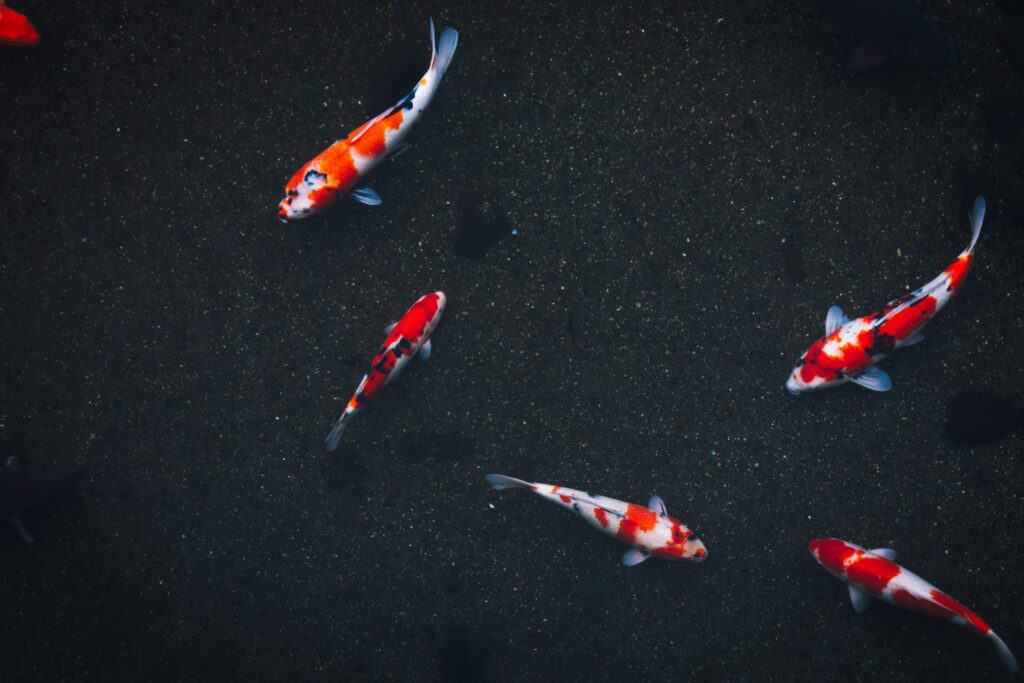
When it comes to aquatic wonder, there’s no denying the charm of Koi fish. With their colourful and intricate patterns, Koi have become living artworks shaped by generations of careful breeding. The journey of how these fish transformed into the stunning variety of colours we see today is a testament to the art of selective breeding. Let’s dive into the captivating tale of how Koi fish were bred to showcase their enchanting hues.
Koi’s Journey from Carp: Looking Back in Time
The story of Koi fish’s colourful makeover takes us back many centuries to ancient China. Originally, Koi were just regular carp (Cyprinus carpio), and they were bred for practical reasons like food. But it was the Japanese who turned carp breeding into an art form, making them the beautiful Koi we adore today.
Early Days: The Han Dynasty
The earliest record of choosing carp for specific traits dates back to China’s Han Dynasty (206 BC–220 AD). Farmers stumbled upon a red carp in a pond and saw its specialness. They began selective breeding of these red carp, giving rise to a specially bred variety.
Japanese Innovation: The Birth of Nishikigoi
Japan is where the true transformation of common carp into Koi took place. In the 17th century, Koi made their way to Japan, where they went through a revolution in breeding and artistry. This marked the beginning of “Nishikigoi,” which means “brocaded carp.” The name refers to the elaborate patterns and rich colours that set Koi fish apart.
The Tricks of Selective Breeding:
1. Brighter Colours: The journey began by spotting naturally occurring colour variations within the carp population. Breeders then bred these variations to intensify the desired colours, resulting in vivid and lively hues.
2. Mixing Genes: Breeders tried mixing different Koi types to create new colour mixes. By carefully matching various Koi varieties, they achieved fresh patterns and colours that were completely new.
3. Keeping the Lineage: Breeders set up lines of Koi fish with consistent colour patterns by pairing individuals showing the desired traits. Over time, this led to the development of distinct varieties.
4. Picky Selection: The culling process meant removing Koi that didn’t meet the wanted colour or pattern standards. This strict practice made sure only the most promising fish got to breed, leading to continuous improvement.
Different Types and Their Meanings:
1. Kohaku: Kohaku Koi, with their white base and red marks, represent purity and strength. The strong contrast between white and red captures the balance between opposites.
2. Sanke: Sanke Koi, sporting white, red, and black marks, symbolise harmony and balance. The black markings are thought to ward off negative energy.
3. Showa: Showa Koi, with their black base and red-white marks, stand for courage and resilience. The mix of colours depicts the journey from dark to light.
Modern Success and Ongoing Artistry:
Today, Koi breeding has reached new heights, with enthusiasts globally dedicated to creating fish of unparalleled beauty. The array of colours available today showcases countless hours of selective breeding and the unwavering dedication of Koi lovers. To ensure you are getting the best Koi fish on the market it is important to see a Koi fish specialist like Koi Water Garden in Sutton.
Closing Thoughts: Beauty’s Evolution
The stunning colours displayed by Koi fish is proof of the bond between human creativity and nature’s beauty. The path from simple carp in ancient times to the splendid Koi of today is a tribute to the strength of careful selection, dedication, and the admiration of beauty. Each Koi swimming in a pond is a masterpiece embodying generations of improvement, a living canvas reflecting the timeless charm of colour, shape, and the everlasting connection between people and the natural world.
Related post: Is Koi Fish Edible